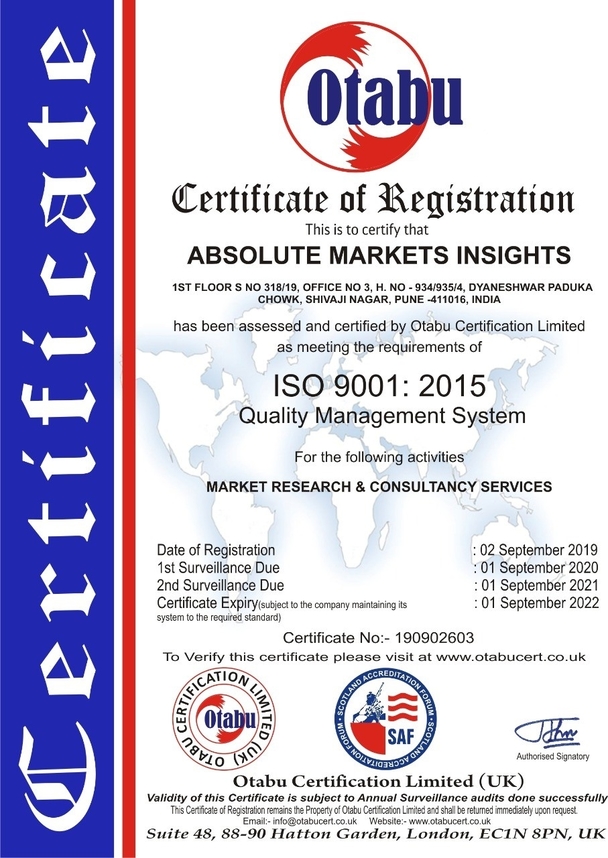
Rainfall and Run-off Software Market was valued at US$ 403.1 Mn in 2018 and is Expected to Reach US$ 671.5 Mn by 2027, Owing to Increasing Demand by Local Bodies to Manage Runoffs Associated with Flashfloods and Intense Rains, says Absolute Markets Insights
Climatic change is a defining issue over the past couple of decades. From fluctuating weather patterns that affect the food production chain to rising sea levels that increase the risk of calamitous flooding, the impacts of climate change are globally and unprecedented in scale. The digital rainfall and run-off platforms have minimized the intervention of humans in analyzing the precipitation cycle with no manual data collection and no mountains of paperwork to navigate through. Instead, the weather sensors automatically calculate the rainfall intensity to provide sustainable run-off solution. Demonstrating runoff can help in understanding, controlling, and monitoring the quality and quantity of water resources. A number of models have been invented to overcome the limitations of others and incorporate additional elements of the environment that plays an important role in runoff simulation. Most of the government agencies across the globe have been utilizing the run-off model to simulate their precipitation cycle process. For instance, Geoscience Australia, in collaboration with Engineers Australia collected 30 years of data from across the country, including observations from more than 10,000 rainfall gauges and 100,000 storm events. This data is helping them to analyze the climatic pattern and structure the run-off modelling across the states. Such factors are propelling the growth of rainfall and run-off software market across the globe.
Global warming has been a concerning question for all government agencies worldwide. The rise in the average temperature has not only changed the climatic rule but has also changed the stats of Arctic and Greenland ice caps run-off. Government bodies and local authorities are continuously investing to design management plans and projects to sustain against weather calamities such as storms, flooding, landslides, soil erosion etc. Hence, the rainfall and run-off software market is expected to witness lucrative growth over the forecast period owing to the growing initiatives by the government bodies to respond to any upcoming natural disaster.
The detailed research study provides qualitative and quantitative analysis of the global rainfall and run-off software market. The market has been analyzed from demand as well as supply side perspective. The demand side analysis covers market revenue across regions and further across all the major states. The supply side analysis covers the major market players and their regional and global presence and strategies. The geographical analysis done emphasizes on each of the major countries across the globe.
Purchase the complete report titled “Global Rainfall and Run-Off Software Market - Global Insights, Growth, Size, Comparative Analysis, Trends and Forecast, 2015-2027” at
https://www.absolutemarketsinsights.com/reports/Rainfall-and-Run-off-Software-Market-2019-2027-421
Global Rainfall and Run-Off Software Market Share in 2018, By Region
Key Findings of the Report:
- In terms of revenue, the global rainfall and run-off software market is expected to reach US$ 671.5 Mn by 2027 owing to the strict government rules and regulations for tackling run-off challenges.
- On the basis of deployment mode, the cloud based segment is expected to witness highest CAGR over the forecast period owing to flexible and cost effective support provided by cloud based infrastructure.
- The primary market participants in the global rainfall and run-off software market are Aquatic Informatics Inc., Bentley System Incorporated, FLO-2D Software, INC, HydroCAD Software Solutions LLC, Innovyze, J.F. Sabourin and Associates Inc., KISTERS AG, Rehm Software GmbH, SoilVision Systems Ltd., Vieux & Associates INC, Water Resource Associates LLP.
Rainfall and Run-off Software Market:
- By Deployment
- Cloud
- On Premises
- By Operating System
- Windows
- Linux
- Mac
- By End Users
- Construction
- Educational Institutes
- Government
- Media and Journalism
- Oil and Gas
- Power
- Others
- By Organization Size
- Small and Medium Enterprises
- Large Enterprises
- By Geography
- North America
- United States
- Canada
- Mexico
- Europe
- France
- The UK
- Spain
- Germany
- Italy
- Nordic Countries
- Denmark
- Finland
- Iceland
- Sweden
- Norway
- Benelux Union
- Belgium
- The Netherlands
- Luxembourg
- Rest of Europe
- Asia Pacific
- China
- Japan
- India
- New Zealand
- Australia
- South Korea
- Southeast Asia
- Indonesia
- Thailand
- Malaysia
- Singapore
- Rest of Southeast Asia
- Rest of Asia Pacific
- Latin America
- Brazil
- Argentina
- Rest of Latin America
- Middle East and Africa
- Saudi Arabia
- UAE
- Egypt
- Kuwait
- South Africa
- Rest of Middle East & Africa
- North America

